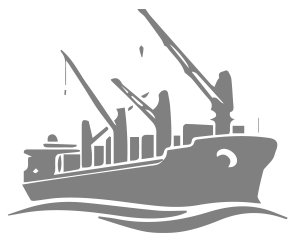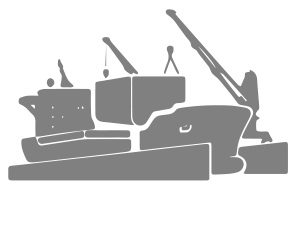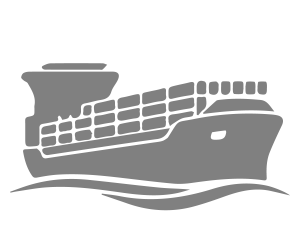Gross Register Tonnage or Gross Tonnage (GRT / GT)
- The gross tonnage is relevant for manning regulations, safety rules
and registration fees, as well as for the calculation of port dues; - Ships volume in cubic meters below the main deck and enclosed spaces above the main deck; this volume is multiplied by a coefficient which results in a non- dimensional number( no values of
t or m3 should be placed after the number) ;
Net Register Tonnage
Also a non- dimensional number which describes the volume of the cargo space;- Derived from the GT by extracting the volume allocated for the crew, navigation equipment, propulsion equipment, workshops
and ballast; - May not be less than 30% of the GT and is also relevant for the calculation of the port dues.
Underwater volume or
Represents the
Displacement ( m3)
The volume of the immersed hull including shell plating, propeller
Displacement D or ∆ (ton)
The weight of the volume of the water displaced by the vessel; it equals the total mass of the ship;
Lightship weight ( ton)
The weight of the vessel including the regular inventory( anchors, lifesaving appliances, lubricating oil, paint etc. ) without taking into consideration cargo, fuel or crew;
Deadweight ( ton)
- The weight a vessel can load until it reaches the maximum allowed immersion( summer load line);
- Fixed value, unique for each vessel;
Cargo capacity ( ton)
- The total weight of cargo a ship is designed to carry at a certain time; it depends on the draught of a vessel and
necessary amount of fuel, provisions, drinking water etc. - Cargo capacity( tons) = deadweight( tons) – ballast, fuel, provisions( tons)

 Projects
Projects Bulk
Bulk Break Bulk
Break Bulk Freight
Freight Trucking
Trucking